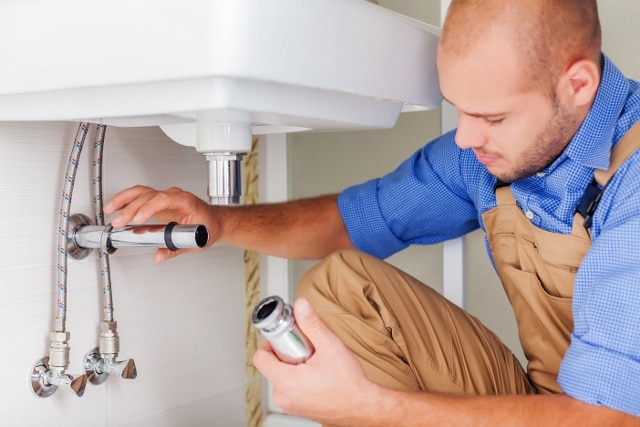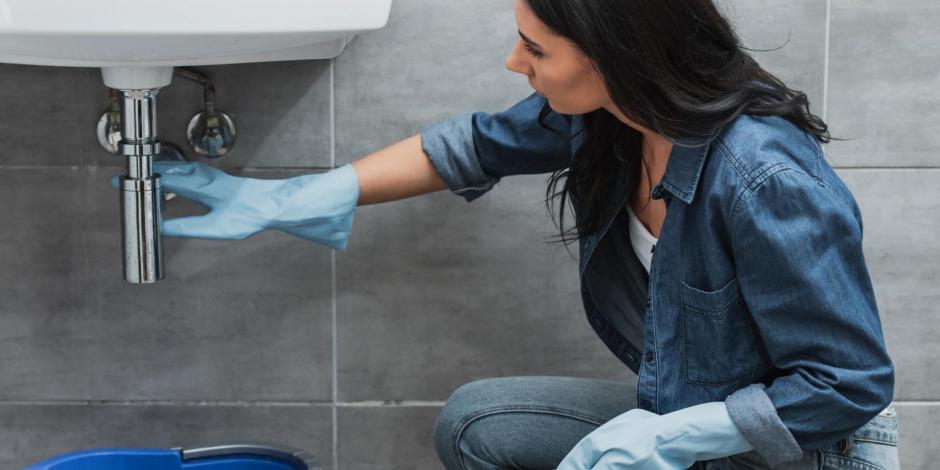Are you searching for critical info on When to DIY and When to Call a Professional Plumber?

Introduction
Plumbing problems can vary from minor aggravations to major migraines, often motivating homeowners to determine between tackling the issue themselves or calling a specialist plumbing technician. Knowing when to DIY and when to seek specialist aid can conserve time, cash, and avoid possible catastrophes. This post discovers the aspects to consider when making this important choice.
Advantages of Do It Yourself Pipes
Tackling pipes tasks on your own can be fulfilling in numerous methods, particularly for easier jobs.
Price Financial savings
DIY pipes jobs usually conserve money by avoiding professional service fees. Tasks like dealing with minor leakages, replacing taps, or setting up new showerheads are instances where property owners can take care of repairs without hiring a plumbing professional.
Ability Improvement
Engaging in do it yourself pipes uses a possibility to discover and improve functional abilities. Fundamental jobs empower property owners to recognize their plumbing systems much better and get confidence in taking care of tiny repairs separately.
Dangers of DIY Pipes
While DIY tasks offer benefits, particular risks need to be very carefully taken into consideration before attempting fixings.
Complexity of Tasks
Some plumbing problems require specific knowledge and tools past common house owner capacities. Messing up intricate troubles can bring about further damage and pricey fixings.
Safety and security Worries
Collaborating with plumbing systems entails dangers such as direct exposure to water damage, possibility for electrical threats, and managing tools improperly. Security preventative measures must be observed to prevent accidents and make certain effective fixings.
Indicators to Call a Professional Plumbing Technician
Identifying when a plumbing problem surpasses DIY capacities is critical to avoid aggravating issues.
Indicators of Complicated Problems
Examples consist of:
Prompt expert treatment is necessary to deal with these problems successfully and decrease damage.
DIY Plumbing Tips
For successful DIY plumbing, it's important to be prepared with the right tools and comply with correct procedures.
Fundamental Devices and Materials
Key devices for do it yourself plumbing:
Step-by-Step Guides
Clear instructions ensure risk-free and effective DIY repairs:
Picking the Correct Time to Do It Yourself
Establishing when to deal with pipes tasks on your own requires examining both the intricacy of the concern and individual convenience levels.
Assessment Checklist
Take into consideration:
When to Most Definitely Call a Professional
Certain circumstances require immediate professional attention to prevent substantial damages or security risks.
Instances include:
Finding and Employing an Expert Plumbing Professional
Picking a certified plumber guarantees reputable service and assurance in dealing with pipes concerns.
Standards for Option
Variables to take into consideration:
Price Analysis: DIY vs. Professional Services
Contrasting the monetary effects of DIY initiatives versus expert plumbing solutions helps in making informed decisions.
Financial Considerations
Review:
Final thought
Determining whether to do it yourself or call a professional plumber rests on understanding the complexity of plumbing problems and individual capacities. By considering the advantages and risks, property owners can make educated options that advertise effective maintenance and protect their homes from plumbing catastrophes.
When to DIY and when to call a professional plumber
There are Australian laws and regulations that regulate plumbing work in Australia. This means that there are few home plumbing tasks that you can DIY. Besides, a lot can go wrong with DIY plumbing projects. However, there are also plumbing works that you can successfully DIY. Read on to know when to DIY and when to call a professional plumber.
You can learn more about the risks of DIY plumbing projects, projects requiring special caution, and illegal DIY plumbing works to avoid. This post concludes with the services of commercial plumbers and why getting expert help is essential.
Reasons to Attempt DIY Plumbing Projects
While it is often not advisable to perform DIY plumbing repairs, several pros of DIY plumbing projects can make them attractive.
Save costs
A significant reason for doing DIY plumbing jobs is to save costs. It is possible to save on labour charges and overall fees if you buy the needed tools and parts from local hardware stores and do the repairs yourself.
Gaining experience
You can gain some hands-on experience in basic plumbing repair if you watch online videos and attempt the repairs yourself.
Confidence boosting
You can boost your confidence and self-reliance skills by performing DIY plumbing repairs and installations yourself.
Risks of DIY Plumbing Projects
If something goes wrong with your DIY plumbing project, you may have unfavourable results that you may consider the cons of DIY plumbing.
For one, your home may get so extensively water-damaged that your home and contents insurance will not cover you. You will also have to spend more money to repair the water or sewage problem than you would otherwise spend for professional plumbing jobs. Besides, you may often spend more time on DIY plumbing work than an experienced plumber would spend. This is because you may not have the needed skill set. There are also related safety hazards and potential threats of DIY plumbing jobs that you may need to consider. Plumbing Issues You Can Fix Yourself
You can attempt DIY plumbing for plumbing issues such as replacing tap washers, installing shower heads or performing minor tap leak repairs. However, it would help if you invited licensed plumbers to fix complex leaking showers, effectively deal with blocked drains, or repair hot water systems. This is the best way to ensure these plumbing issues are correctly fixed, and the project is insured.
Fixing clogged or blocked drains
You may have clogged drains or need help with slow-draining showers. These are tasks that you can resolve yourself using several options. To fix blocked drains, you may use baking soda, plungers, or wire hangers. Meanwhile, you can take the preventive measure of installing filtration systems such as drain filters to help prevent drain clogs.
New faucet installations
It is possible to install a new faucet yourself. You would have to turn off the hot and cold water valves. Then, you can remove and fix the old faucet and replace it with the new one.
Leaky faucet repairs
While leaky faucet repairs are more technical than installations, you can also take some steps to fix them. Turning off water valves is the first step in draining water from plumbing systems. Next, you can use a washcloth to cover the drain and remove the decorative handles.
This will allow enough room to unscrew the nuts that attach the faucet handle to the stem. Your final step is to take out and replace the old washers and O-rings with the new duplicates.
Fixing running toilets
An occasional DIY solution for running toilets is to restore the flapper in the tank to its proper place.
Burst pipes
You may have issues with your exterior plumbing fixtures. It may simply be that your inbound or outbound pipes have worn out, or you may have burst pipes due to flooding or large tree roots.
You may also have frozen pipes. These are all instances when you need to call a professional plumber. They will perform pipe inspections to locate the problem and implement solutions such as pipe relining.
Interior plumbing repairs
It's usually time to call a competent plumber if you want to do plumbing repair work on floors, ceilings, or the walls of your building. They can also help you fix faulty showers and sinks.
Plumbing renovation
Major renovation projects or plumbing jobs such as bathroom remodelling and bathroom renovations require the services of a professional plumber. Likewise, you need a professional plumber to fix your kitchen sink or plumbing. They can help you get the required plumbing permits. At the same time, they know what building codes apply to such renovation projects.

I found that blog entry about When to DIY and When to Call a Professional Plumber when scouting around the search engines. You should take the opportunity to share this blog posting if you liked it. Thanks a bunch for your time. Return soon.
View